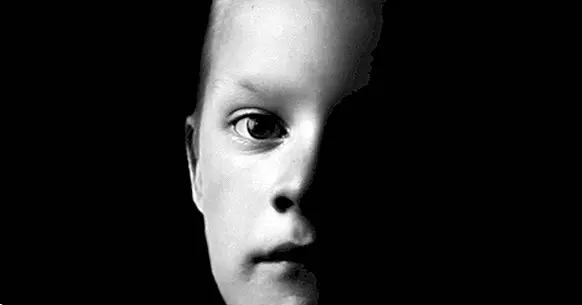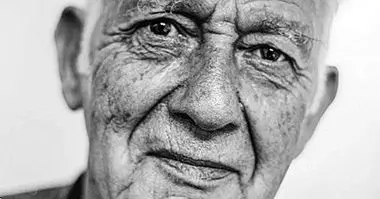What is schizophrenia? Symptoms and treatments
If someone speaks to us with mental disorder, probably one of the first words (possibly next to depression) that comes to mind is the one that gives title to this article: schizophrenia .
And is that this disorder is one of the best known and probably the most literature has been published, there are vestiges and stories that make people think since antiquity that different people (who even considered themselves possessed by spirits) manifested visions, thoughts, behaviors and strange expressions that coincide in great measure with the symptoms of this disorder. Throughout this document we will talk about what is schizophrenia, how it affects those who suffer it and how it is treated.
- Related article: "The 16 most common mental disorders"
What is schizophrenia?
Schizophrenia is one of the most widely known mental disorders in general, and the main one of the psychotic type disorders . We are facing an alteration that supposes and generates an important alteration in the life of the sufferer, requiring his diagnosis of compliance with a series of criteria.
Thus, the diagnosis of this mental disorder requires that during a minimum of six months most of the time at least two of the following symptoms occur (and each one for at least one month): hallucinations, delusions, alterations and disorganizations of the patient. language, catatonia or negative symptoms such as praise, affective flattening and / or apathy.
Perhaps the most common and prototypical symptom is the presence of hallucinations, usually of an auditory nature and in the form of second-person voices, which may be accompanied by self-referential delusions, persecution and theft, implantation or reading of thought .
It is important to keep in mind that these hallucinations are not something invented: the subject really feels them as something external. However, it is usually one's own thoughts that are experienced as coming from outside (it is speculated that they may be due to the disconnection between prefrontal and regions of speech that hinders the self-consciousness of subvocal speech) or of anomalous interpretations of external noises.
- Maybe you're interested: "The 5 differences between psychosis and schizophrenia"
Positive and negative symptoms
The predominant psychotic symptoms in schizophrenia They have been grouped generally into two major categories, positive and negative symptoms, which have different characteristics and effects on the patient.
The positive symptoms would refer to those alterations that suppose a exacerbation or alteration of the capacities and habitual functioning of the patient , generally adding something to that operation. An example of this would be hallucinations, delusions and strange behaviors).
As far as negative symptoms are concerned, they will refer to those alterations that suppose a loss of existing skills before. It is the case of the alogia or impoverishment of the thought, the affective flattening or the apathy.
Course of psychopathology
Schizophrenia is currently considered a chronic disorder. This disorder usually occurs in the form of outbreaks , although there are cases in which they do not emerge as such, but there is a constant deterioration. Usually psychotic outbreaks arise, in which there are many positive symptoms such as hallucinations and agitation, after which there is usually a complete or partial remission.
It is possible that a single psychotic outbreak with complete remission may arise, although usually several are occurring throughout life. As we have indicated there may be complete remission, but there may also be cases in which said remission is partial and symptoms and cognitive deterioration remain . This deterioration may remain stable or may be in progress (which is why Kraepelin called this early dementia disorder).
Difficulties
The suffering of a schizophrenia can have a large number of consequences and generate severe difficulties. And is that the set of symptoms described above significantly interfere with the normal functioning of the subject in day to day, in areas such as interpersonal relationships, work or academia.
Social interactions are often reduced and affected to a large extent, and job and even academic skills and possibilities can also be greatly altered, especially if there is deterioration. Subjects with schizophrenia usually present attentional problems and information processing, especially in those cases that present negative symptoms. Its performance in tasks of sustained or selective attention is less.
In addition, the effect that the diagnosis itself has on the subject must be taken into account: schizophrenia is a disorder considered chronic and that to this day is still very stigmatized , even by the people who suffer from it. The diagnosis is a very hard and traumatic moment for the subject, and it is possible that depressive symptomatology and / or a period of bereavement, denial of the diagnosis and opposition to the treatment appear. This last aspect is especially important, since with treatments psychotic outbreaks are greatly reduced or prevented.
Are there types of schizophrenia?
Until relatively few years ago, within schizophrenia we could find a series of typologies that they referred to a type of predominant symptomatology or a form of presentation of the specific disease.
Specifically, one could find paranoid schizophrenia (focused on hallucinations and delusions of persecutory and referential character, together with aggressiveness and other alterations), disorganized (whose main characteristic is chaotic and incoherent behavior and thinking and flattening and affective inadequacy) or the catatonic (in which the most outstanding problems were the psychomotor alterations, with silence and immobility as well as waxy flexibility and agitation), together with the residual (in which the subject had recovered from an outbreak with the exception of some symptoms that remained , usually of a negative type) or simple (with a prevalence of negative symptoms, such as emotional flattery and praise).
However, in the latest version of one of the most widely used manuals in the world, the DSM-5, this distinction is no longer agglutinate all the subtypes in a single diagnostic entity . Despite this it is a decision that is not shared by many professionals, who criticize this measure. In fact, some people propose that more than schizophrenia should be spoken of disorders of the psychotic spectrum, similar to what has happened with autism.
- Related article: "The 6 types of schizophrenia and associated characteristics"
Hypothesis regarding its causes
The causes of this disorder, like those of many others, are still largely unknown to this day. Despite this, they have been developed throughout history different hypotheses about what can lead to schizophrenia .
Biological hypothesis
At a biological level, what is known is that people suffering from schizophrenia have alterations in the levels of dopamine in certain cerebral pathways. Specifically, those subjects who present alterations of positive type as hallucinations or delusions have an excess or hyperfunction of dopamine synthesis in the mesolimbic pathway, while negative symptoms have been related to a deficit of this hormone in the mesocortical dopaminergic pathway. However, the reason for this phenomenon is still unknown.
Cerebrally, it has been observed that there are differences such as a lower blood flow to the frontal areas of the brain , differences between both temporal lobes and a smaller volume of some structures such as the hippocampus and the amygdala, as well as larger cerebral ventricles.
It has been observed that genetics seems to have a certain role, often looking for the involvement of different genes on the appearance of the disorder. Research shows that there does seem to be a genetic predisposition linked to a greater vulnerability of suffering it , although the disorder does not have to be triggered. They are going to be the set of vital circumstances that surround the individual that determine if this predisposition awakens the disorder or not.
Today, one of the most hypothesized hypotheses is that we are facing a problem in neural migration throughout the development that generates alterations that end up stabilizing and that would only generate manifestations in the presence of stressors or hormonal changes such as those produced by the passage to adulthood.
Another hypothesis links it to the existence of viral infections during pregnancy, on the basis that many subjects with this disorder are usually born in winter and that different conditions such as influenza could cause alterations in the brain.
Psychological hypothesis
In addition to biological hypotheses, there are others of a much more psychological nature that must be taken into account, although they are not hypotheses that are necessarily mutually exclusive.
The most well-known and predominant model that is employed in the psychological explanation of schizophrenia is the diathesis model (or vulnerability) - stress. This hypothesis establishes the existence of a stable and permanent vulnerability, partly biological and partly acquired, to suffer from this disorder and to present problems of information processing or problems of social competence and stress management.These subjects will face different types of stressors, such as life events or other more permanent circumstances (such as a very critical family environment or with excessive emotion expressed to which they will have to adapt), but depending on the circumstances , it may happen that they fail in this adaptation and can not adjust, this ends up generating the unleashing of the disorder.
Some of the oldest theories, of a psychodynamic nature and especially linked to paranoid schizophrenia, consider that the causes of the disorder can be found in the presence of deep psychic conflicts of which the subject defends himself by projection (placing one or some of the the own characteristics in another person) and negation of the conflict, that in occasions end up generating the dissociation of the mind with the reality. However, these explanations have no scientific value.
Treatment
Schizophrenia is a chronic disorder that has no cure recognized as such for the time being, although the symptoms can be treated in such a way that those who suffer it can have a normal life and remain stable, preventing the appearance of outbreaks.
For this, however, the treatment has to be continued throughout the life cycle of the subject in order to prevent the appearance of new outbreaks. In general, drugs known as antipsychotics are used for this purpose, which act by treating the excess of dopamine in the mesolimbic pathway and, in the case of those classified as atypical, also improving the negative symptomatology in increasing the levels of said hormone in the mesocortical pathway. .
It is also working from the psychological field, with therapies such as targeting to work on auditory hallucinations or cognitive restructuring to change cognitions and beliefs (delusions and / or about the disorder itself). As well social skills training and sometimes counseling and re-employment can be of great help to combat the difficulties generated by the disorder. Finally, the psychoeducation of the subject and the environment are fundamental.
Bibliographic references
- American Psychiatric Association. (2013). Diagnostic and Statistical Manual of Mental Disorders. Fifth edition. DSM-V. Masson, Barcelona.
- Santos, J.L. ; García, L.I. ; Calderón, M.A. ; Sanz, L.J .; de los Ríos, P .; Left, S .; Román, P .; Hernangómez, L .; Navas, E .; Thief, A and Álvarez-Cienfuegos, L. (2012). Clinical psychology. CEDE Preparation Manual PIR, 02. CEDE. Madrid.
- Vallina, O. and Lemos, S. (2001). Effective psychological treatments for schizophrenia. Psicothema, 13 (3); 345-364.



















